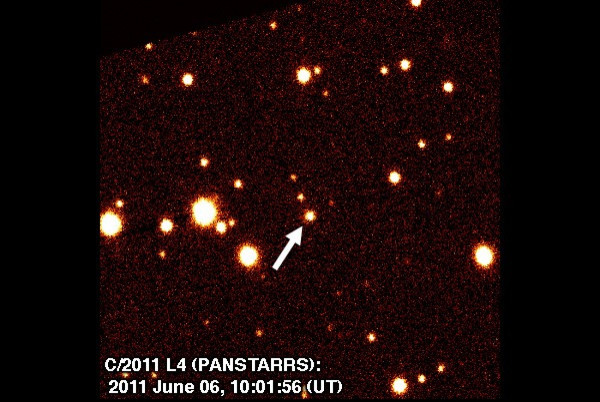Newfound comet will make its closest pass by Earth in 2013, visible to naked eye

A telescope high atop a volcano peak in Hawaii has discovered a newfound comet which will make its closest pass by Earth in 2013 and should be visible to the naked eye, said astronomers.
Pan-STARRS 1 telescope in Hawaii discovered the comet on the night of June 5 and 6. A day later, the discovery was confirmed by follow-up observations with a different instrument, a SPACE.com report said.
According to researchers, the comet, which is called C/2011 L4 (PANSTARRS), is expected to come within about 30 million miles (50 million kilometers) of the sun in February or March 2013 - almost the same distance as the planet Mercury.
Skywatchers will be able to see comet C/2011 L4 (PANSTARRS) in the western sky shortly after sunset, weather permitting.
The comet has an orbit that is close to parabolic, meaning that this may be the first time it will ever come close to the sun, and that it may never return, said the University of Hawaii's Richard Wainscoat, who helped confirm the comet's existence, in a statement.
Pan-STARRS detected the comet, which has been named after it, while examining the sky for potential hazardous asteroids - by which the earth may be hit someday. However, C/2011 L4 (PANSTARRS) doesn't pose any danger to our blue planet, said researchers.
They further stated that the comet, which is about 700 million miles (1.2 billion km) from the sun right now, most likely originated in the Oort cloud, a halo of icy objects in the far reaches of the solar system.
Pan-STARRS 1 telescope has the largest digital camera in the world at 1.4 billion pixels with a 1.8-meter-diameter mirror. It captures images in every 45 seconds, and the size of each image is nearly 3 gigabytes.
© Copyright IBTimes 2025. All rights reserved.






















